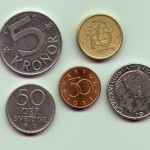The euro declined against the US dollar during the first trading session of 2014 on speculation that the Fed might taper its stimulus program further. Meanwhile, reports revealed that the manufacturing activity in the euro zone improved in December.
Having reached a session low at 1.3716 at 08:10 GMT, EUR/USD traded at 1.3738 at 09:54 GMT, losing 0.15% for the day. Support was likely to be received at December 27th low, 1.3693, while resistance was to be encountered at December 31st high, 1.3813.
The market research group, Markit Economics released a report that showed the Spanish Manufacturing PMI rose to 50.8 in December, beating analysts projections of 49.9 reading. In November the Manufacturing PMI stood at 48.6.
A separate report by the same market research group, showed the Italian manufacturing activity in December expanded at the fastest pace since April 2011. The Italian manufacturing PMI rose to a seasonally adjusted 53.3 in December from a reading of 51.4 in November. Analysts anticipated the index to rise to 51.8 in December.
The manufacturing activity in Germany, the euro zone largest economy, rose to a seasonally adjusted 54.3 in December from a reading of 54.2 in November. Analysts estimated the index to remain at 54.2 in December.
The euro zone manufacturing PMI remained unchanged in December with a reading of 52.7, in line with analysts forecasts.
Meanwhile, the US dollar remained supported after a report by the Conference Board on Tuesday revealed that the US consumer confidence increased to 78.1 in December from 72.0 in November. Analysts projected that the index will increase to 76.0 in December.
The US currency was also supported after Standard & Poor’s/Case-Shiller house price index rose by an annualized rate of 13.6% in October, compared to a year ago, the strongest increase since February 2006 and above analysts forecasts for an increase of 13%.
The reports reinforced speculations for further stimulus tapering by the Federal Reserve. The central bank starts reducing its bond purchasing program by $10 billion to $75 billion this month on improving US economy outlook.
According to the median estimate of economists surveyed by Bloomberg on December 19th, the Federal Reserve may reduce the purchases in $10 billion increments over the next seven meetings, before ending the program in December 2014.
Later in the day, the US is expected to release the number of initial jobless claims for the week ended December 28th, as well as a report by the Institute of Supply Management on manufacturing activity.
Elsewhere, AUD/USD touched a session low at 0.8908 at 7:08 GMT, after which consolidation followed at 0.8913, down 0.19% for the day after a 13% drop in 2013. Support was likely to be received at December 30th low, 0.8834, while resistance was to be encountered at December 31st high, 0.8949.





